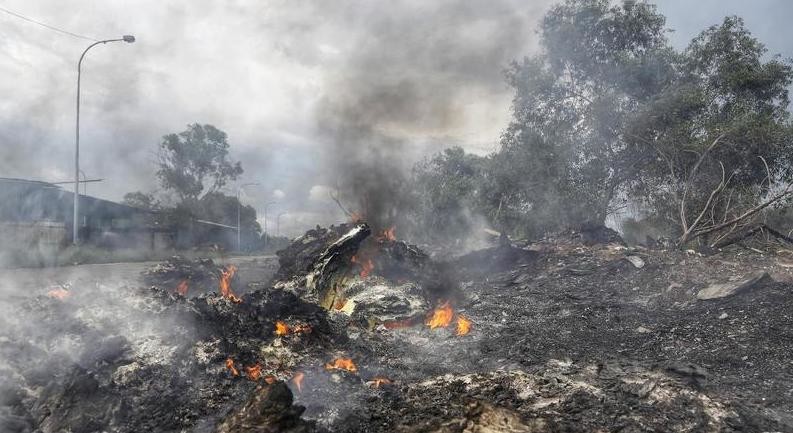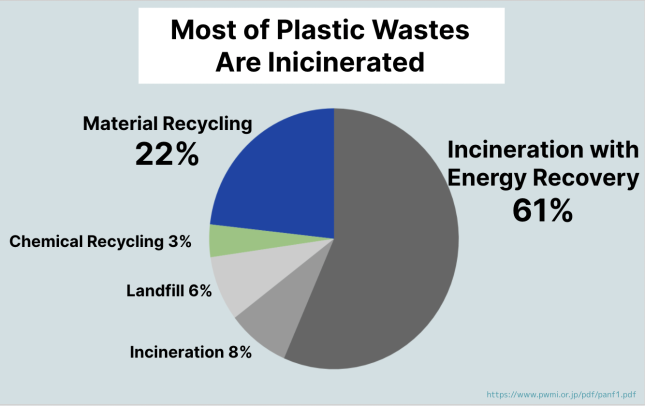-
Imagine a Future Without Single-Use Plastics
November 18, 2021 By Hiroaki OdachiIf producing plastic waste were a race, Japan would be rushing for the gold medal. Japan and the United States both rank the highest per capita for plastic packaging waste in the world. Former Prime Minister Shinzo Abe’s administration set a goal to reduce Japan’s plastic waste production by 25 percent by 2030 and recent polls show the majority of the Japanese public wants strong actions to reduce plastic waste. Nevertheless, Japan is not doing enough to stem the tide of plastic entering the ocean. If Japan and the rest of the world fail to act more boldly, global oceanic plastic waste could triple by 2040. Current commitments of governments and corporations would only reduce global plastic leakage seven percent below the business-as-usual scenario. Japan’s current waste management system prioritizes recycling and incineration, encouraging a make-take-waste linear model of plastic consumption. Japan needs a circular economy built on a culture of reduction and reuse instead of single-use plastics.
Nearly all plastic is made from fossil fuels, so greenhouse gases are emitted at every stage of its lifecycle from the extraction of gas and oil to the refinement and production, incineration, landfilling, and even the recycling of plastic. The production of plastic also releases hazardous chemicals into air, water, and soil creating serious health and environmental justice problems in marginalized communities.
The fossil fuel industry is making huge investments into plastic production to drive further growth, such that plastic production is expected to double over the next two decades. The fossil fuel industry is working with consumer goods companies (like Coca-Cola and Nestle) to continue benefiting from a broken system of single-use packaging. These companies often tout recycling as the solution to the plastic crisis, but recycling is a false solution, allowing them to continue to ramp up plastic production.
Japan tries to melt the costly problem away
Japan has had a packaging law since the 1990s requiring businesses and municipalities to share the costs of collecting, sorting, and processing packaging waste. However, in practice, municipalities are saddled with these rising costs.
Plastic packaging makes up 50 percent of the household waste that Japanese citizens assiduously sort. The Japanese government has long promoted its high plastic recycling rate of over 80 percent. In reality, most (61 percent) of the collected plastic waste is incinerated in a process known as “energy recovery” which uses the plastic waste to generate electricity or create flame retardants. Because the Japanese government promoted this process as “thermal recycling,” incineration now accounts for the largest volume of treated waste.
Thermal recycling is not considered by most definitions to be recycling as it does not recover the material. The process notably releases greenhouse gasses and possibly other toxins. As a result, the Japanese citizens who assiduously sort their wastes, are misled into believing they are doing a good job recycling and a good service for the planet.
Recycling as a myth
If the world was taking the idea of a circular economy seriously, plastic packaging produced from oil and gas could be recycled over and over again without needing to extract more virgin fossil fuels. In reality, only two percent of the globe’s plastic packaging is “closed loop” recycled globally. Even closed loop recycling systems do not work indefinitely. A bottle is recycled into another bottle, but this “reborn” bottle may not make it back to the recycling bin. Moreover, many types of plastics degrade in quality during recycling and are downcycled into other low quality plastics or simply incinerated or landfilled.
Globally scattered waste trade networks are the foundation for broken recycling systems. Developed countries such as the United States, the EU, and Japan usually export their waste to other countries for “recycling.” Japan reports that 22 percent of plastic is mechanically recycled, but not all of that 22 percent is processed domestically — about half is exported overseas where it becomes more difficult to ensure the quality of recycling.
Greenpeace and other NGOs report how plastic waste exported from developed countries often includes a lot of dirty plastics, which end up being burned on streets or dumped illegally in the importing countries, causing a devastating impact on the environment and human health. Even new restrictions, like those agreed to in the recent Basel Convention which was implemented in January 2021, have not stopped these practices. Greenpeace is calling for an end to plastic waste exporting and a drastic reduction of the amount of waste generated globally.
Still, the Japanese government’s current strategy in tackling plastic waste relies heavily on the broken recycling system. While recycling can be effective, it can not provide a solution for handling the huge quantity of single-use plastic packaging.
Bottom-Up push for change
Greenpeace Japan, together with WWF Japan and other NGOs, have been urging the government to phase out single-use plastic and transition to a reuse system. However, the new law on plastic adopted this year mainly consists of improving recycling and increasing alternative single-use materials such as bio-based plastics, which have their own unique risks to the environment and human health. This is far short of a real solution.
Despite the challenges, change is happening. Nearly two decades ago, the small town of Kamikatsu (in Tokushima prefecture) took a completely different approach than the government. The town did not want to build a new incinerator and in 2003, they became the first municipality in Japan to make a zero-waste commitment, following Greenpeace’s policy recommendation.
Kamikatsu’s population of 1,500, successfully reduced their waste by segregating waste into 45 categories, creating local reuse and refill shops and home composting. However, there is also a limit on what a community can do to reduce waste. In Kamikatsu and the rest of Japan, citizens still need to shop in supermarket chains where products come with disposable packaging that is rarely effectively recycled.
The future is reuse
Research shows that successfully transitioning from the conventional system focused on downstream waste management to a zero-waste management model brings environmental, social, and economic benefits to our communities.
Studies by the nonprofit Upstream have illustrated how food service companies that scale up a reuse model can create positive changes in the United States. Scaling the reuse/refill systems drastically reduces waste and greenhouse gas impacts, saves money for businesses and municipalities, and creates jobs.
We must make this transition towards reuse/refill systems our future and make single-use culture a thing of the past. Big brands like Coca-Cola, Pepsico, Nestle, and Unilever, which have been named as top plastic polluters, must act now to make the transition happen. That is why, at Greenpeace, we are calling on them to stop polluting and become leaders in advancing reuse.
Hiroaki Odachi Joined Greenpeace in 2015 as a field organizer. Leads Japan’s plastic campaign since 2019. Passionate about realizing reuse at scale through campaigning and ending the unjust system of take-make-waste. MA in International Affairs, Australian National University.
Sources: Basel Action Network, Break Free From Plastics, BBC, Carbontracker, Environmental Investigation Agency, GAIA, Greenpeace, National Institutes of Health, Oceana, Pew Charitable Trusts, Public Waste Management Institute, Upstream, WEF, Wilson Center China Environment Forum
Further Reference Video: “Scars of Plastic Waste Trade“
Lead Photo Credit: Plastic waste being burned in an open pit, courtesy of Nandakumar S. Haridas, Greenpeace.
 A Publication of the Stimson Center.
A Publication of the Stimson Center.









